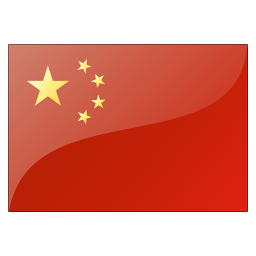



Fujian (福建, Fújiàn) is an attractive coastal province with a long seafaring history. As a significant stop on the maritime Silk Road, its cities developed an easy cosmopolitan outlook and visitors are surprised by the traces of elsewhere in its architecture, food, language and people.

Forever being compared to Běijīng (if anything, it's more like Shànghǎi), the former foreign concession port of Tiānjīn (天津) is a large, booming, yet laid-back city, with a pleasant river promenade and some charming neighbourhoods. It's an easy day trip from the capital, but you may want a long weekend to explore the city properly.

Combining fresh sea air and dashing good looks, Qīngdǎo (青岛) – the name means 'Green Island' – is a rare modern city that has managed to preserve some of its past while angling a dazzling modern face to the future. Its blend of concession-era and modern architecture puts China’s standard white-tile and blue-glass developments to shame. The winding cobbled streets, colonial German architecture and red-capped hillside villas are captivating and there's so much to enjoy in the city’s diverse food scene, headlined by the ubiquitous home town beer Tsingtao. Meanwhile, the seaside aspect keeps the town cooler than the inland swelter zones during summer, and slightly warmer in winter.

Coiling its way through 23 degrees of longitude, the Great Wall (长城, Chángchéng) stands as an awe-inspiring monument to the grandeur of China’s ancient history. With sections dating back 2000 years, the wall (or, more accurately, walls, because they belong to several different eras) wriggle haphazardly from their scattered Manchurian remains in Liaoning province to wind-scoured rubble in the Gobi desert and faint traces in the unforgiving sands of Xinjiang. Interspersed with natural defences (such as precipitous mountains), the Great Wall can be visited in 15 Chinese provinces, principalities and autonomous regions, but nowhere is better than Beijing for mounting your assault on this most iconic of bastions.

An easy half-hour metro ride will take day-trippers from Guǎngzhōu to this city. Fóshān (佛山; literally ‘Buddha Hill’) was famous for its ceramics in the Ming dynasty. Today, it’s better known as the birthplace of two kung fu icons, Wong Fei Hung and Ip Man (Bruce Lee's master), and the Wing Chun style of kung fu developed here.

Běijīng's breadbasket, Héběi (河北) is a slow-moving panorama of grazing sheep, brown earth and fields of corn and wheat. Cosmopolitan Tiānjīn (天津) may put on a dazzling show, but the true charms of this region are its time-worn, earthy textures and its deep-rooted historical narrative.

How popular is this time-locked place? Lijiang’s (丽江, Lìjiāng) maze of cobbled streets, rickety (or rickety-looking, given gentrification) wooden buildings and gushing canals suck in over eight million people a year. So thick are the crowds in the narrow alleys that it can feel like they've all arrived at the same time.

Dali Old Town (大理古城, Dàlǐ Gǔchéng), the original backpacker hang-out in Yunnan, was once the place to chill, with its stunning location sandwiched between mountains and Erhai Lake. Loafing here for a couple of weeks was once an essential part of the Yunnan experience.

Despite being a popular destination with domestic travelers, Guizhou (贵州, Guìzhōu) remains largely unknown to travelers outside China – and what a travesty of justice. The province has two of the country's largest and most spectacular natural features – a waterfall and a cave – while outside the capital, Guiyang, it's pretty much green hills and valleys, flowing rivers and limestone formations to the horizon.

Hong Kong welcomes visitors with an iconic skyline, a legendary kitchen, and lush, protected nature where rare birds and colorful traditions thrive.